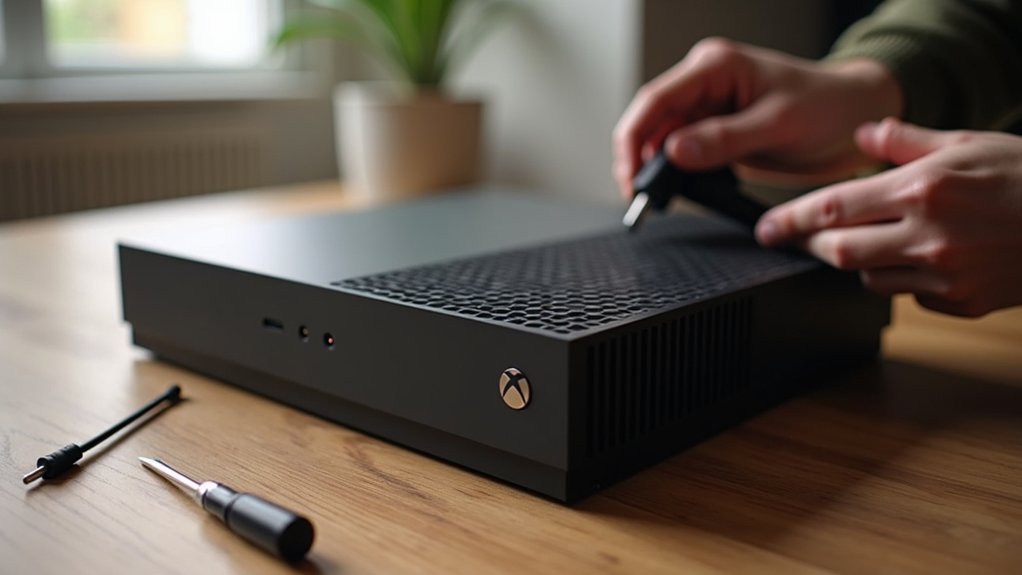
How do I add friends on Nintendo Switch
Need to add friends on Nintendo Switch? Discover simple steps and hidden tips to connect with players worldwide and enhance your gaming experience.


The Xbox Series X promises lightning-fast performance—but sometimes, that startup screen just doesn’t keep up. If your console feels like it’s dragging its feet, you’re not alone.

The good news? There are proven ways to speed things up. Some are quick fixes, others go a bit deeper—but all can make a real difference.
So, what’s the secret to getting your Xbox Series X running like new again? Let’s dive in.
If your console feels sluggish, it’s a good idea to restart your Xbox Series X properly. The quickest method is to use your controller, open the guide, and choose “Restart console.” This refreshes the system without fully shutting it down, which can help fix minor performance hiccups in games.
For deeper issues, perform a full power cycle on your Xbox Series X. Press and hold the power button on the console for about 10 seconds until it turns off, then turn it back on. This clears cached data and can resolve slow boot problems or crashes.
Knowing when to restart your Xbox Series X versus doing a full power cycle can save time, reduce lag, and keep your games running smoothly.
When software issues cause slow boot times, performing a full restart on the Xbox Series X can often resolve the problem.
To do a full restart, press and hold the Xbox button on the controller, select Restart console, then choose Restart.
If the system is unresponsive, hold the power button on the console for 10 seconds to shut it down completely, then power it back on.
This full restart is a quick, gamer-friendly fix that often improves performance and helps address how to fix Xbox Series X slow boot.
For many players, repeating this full restart after major updates can keep things running smoothly and further reduce how to fix Xbox Series X slow boot concerns over time.
Although both restarting and power cycling involve turning the Xbox Series X off and on, they serve distinct purposes for gamers. Restarting reboots the system to fix minor software glitches without fully cutting power, which can quickly resolve small issues during gameplay.
Power cycling, on the other hand, completely shuts down the console and involves unplugging it to clear the cache and reset hardware components, tackling deeper performance problems.
Understanding the differences between restart and power cycle helps improve stability, reduce crashes, and speed up boot times—making your Xbox Series X gaming sessions smoother.
The differences between restart and power cycle are especially important when troubleshooting lag, audio dropouts, or controller sync issues. By knowing the differences between restart and power cycle, you can choose the right fix and get back to playing faster.
Check for and install system updates to fix slow boot issues on your Xbox.
To do this, go to Profile & system > Settings > System > Updates and manually check for the latest patches.
Installing system updates can improve performance, boost stability, and reduce startup times.
Regular system updates also fix bugs that can impact your gaming experience, helping your console launch games faster and run smoother.
How can users ensure their Xbox Series X is running the latest software version?
To check for updates manually on Xbox Series X, press the Xbox button, go to Profile & system > Settings > System > Updates, and select it.
If a system update is available, follow the on-screen prompts to install it.
Performing a check for updates manually helps keep your Xbox Series X optimized for gaming, improves stability, and can resolve issues like slow boot times.
Make it a habit to check for updates manually to ensure you’re always ready for the latest games and features.
Keeping your Xbox Series X updated is essential for smooth gaming. Regular system updates improve stability, fix bugs, and optimize performance, helping prevent slow boot issues.
They also boost security and ensure compatibility with new games and features. By updating your Xbox Series X consistently, you’ll enjoy a more reliable experience, faster load times, and better online play.
Make it a habit to check for updates so your Xbox Series X stays ready for the latest releases and enhancements.
Clearing the cache on an Xbox Series X is a quick way to fix slowdowns and improve performance, especially if games are taking longer to load.
To clear cache on Xbox Series X, fully power off the console, unplug it from the wall, wait at least 30 seconds, then plug it back in and restart. This removes temporary files that can slow down boot times without deleting saved games, apps, or personal data.
For smoother gameplay and faster menus, clear cache on Xbox Series X regularly—it’s a simple maintenance step that helps keep your console and games running their best.
Clearing the cache on Xbox Series X is a simple way to keep your console running smoothly.
Over time, temporary files build up and can slow things down, especially when switching between games and apps.
To clear the cache on Xbox Series X, power off the console completely, unplug the power cable, and wait at least 30 seconds.
Then, plug it back in and turn it on.
This quick reset clears unnecessary temporary data, which can improve boot speed and help games load more reliably.
If you notice sluggish performance or stuttering, clearing the cache on Xbox Series X is a safe, easy first step.
Clearing the cache on Xbox Series X removes temporary files that can cause slowdowns or glitches, but it does not delete saved games or personal data. This means your progress, profiles, and settings remain safe.
In fact, clearing cache on Xbox Series X can improve performance by removing corrupted or outdated files, helping fix issues like slow boot times and stuttering in games.
Gamers can confidently clear the cache to keep their console running smoothly without worrying about losing saved data.
Optimizing power settings can help your Xbox Series X boot faster and feel more responsive.
To speed up startup time, try using Instant-On mode, which lets your Xbox Series X resume quickly from a low-power state.
If you prefer better energy efficiency and a fresh start, switch to Energy-Saving mode, which fully powers down the Xbox Series X and may improve overall responsiveness after a clean boot.
You can change these options by going to Settings > General > Power options.
Test both modes to see which delivers the best balance of speed and performance for your Xbox Series X.
Understanding Instant-on vs Energy-saving mode is key to getting the best experience on your Xbox Series X.
With Instant-on, the console stays in a low-power state for quicker startup and Quick Resume, ideal if you jump into games often.
Energy-saving mode fully powers down the system, cutting electricity use but leading to longer boot times.
For most gamers, choosing between Instant-on vs Energy-saving mode comes down to balancing speed and sustainability.
If you want fast access to your library, go Instant-on; if you prefer lower energy usage, pick Energy-saving.
Looking to optimize boot times on the Xbox Series X? Switching power modes is a quick win.
To change the Xbox Series X power mode, go to Settings > General > Power options. From there, choose Instant-On for faster boot times or Energy-saving mode to cut down on power use.
After you switch the Xbox Series X power mode, restart the console so the changes apply correctly.
This simple tweak to your Xbox Series X power mode can help you jump into games faster while managing energy consumption.
Maintaining adequate free space on the Xbox Series X’s hard drive is crucial for smooth gaming performance and faster boot times. To keep your console running well, regularly uninstall unused games and apps from My Games & Apps and clear old captures.
For gamers with large libraries, using external storage for Xbox Series X games is a smart way to expand capacity without deleting favorites. You can also move Xbox Series X games between internal and external drives to balance space.
Addressing Xbox Series X slow boot issues involves several simple steps you can try at home. First, properly restart the console and perform a full power cycle to clear minor glitches that cause Xbox Series X slow boot delays. Next, make sure your system software is up to date—firmware updates often improve performance and compatibility. Clear the cache to remove temporary files that can slow startup, then adjust power settings (try Energy Saver vs. Instant-On) to see which works best for your setup. Finally, manage storage by deleting unused games and apps to free up space. Following these tips can significantly reduce Xbox Series X slow boot times and keep your gaming sessions smooth.

Need to add friends on Nintendo Switch? Discover simple steps and hidden tips to connect with players worldwide and enhance your gaming experience.

Properly deleting games on Nintendo Switch frees up space and keeps your system organized; discover the simple steps to manage your library efficiently.

Master the art of charging your Nintendo Switch controller efficiently—discover essential tips and tricks to keep your gameplay uninterrupted and your device ready.

Discover the best methods to safely and efficiently charge your Nintendo Switch—avoid common mistakes that could shorten your battery’s lifespan.

Getting your Nintendo Switch on the big screen is easier than you think, but there’s one crucial step you don’t want to miss.

Unlock the world of Nintendo games by creating your own account—discover the simple steps and essential tips to get started today.